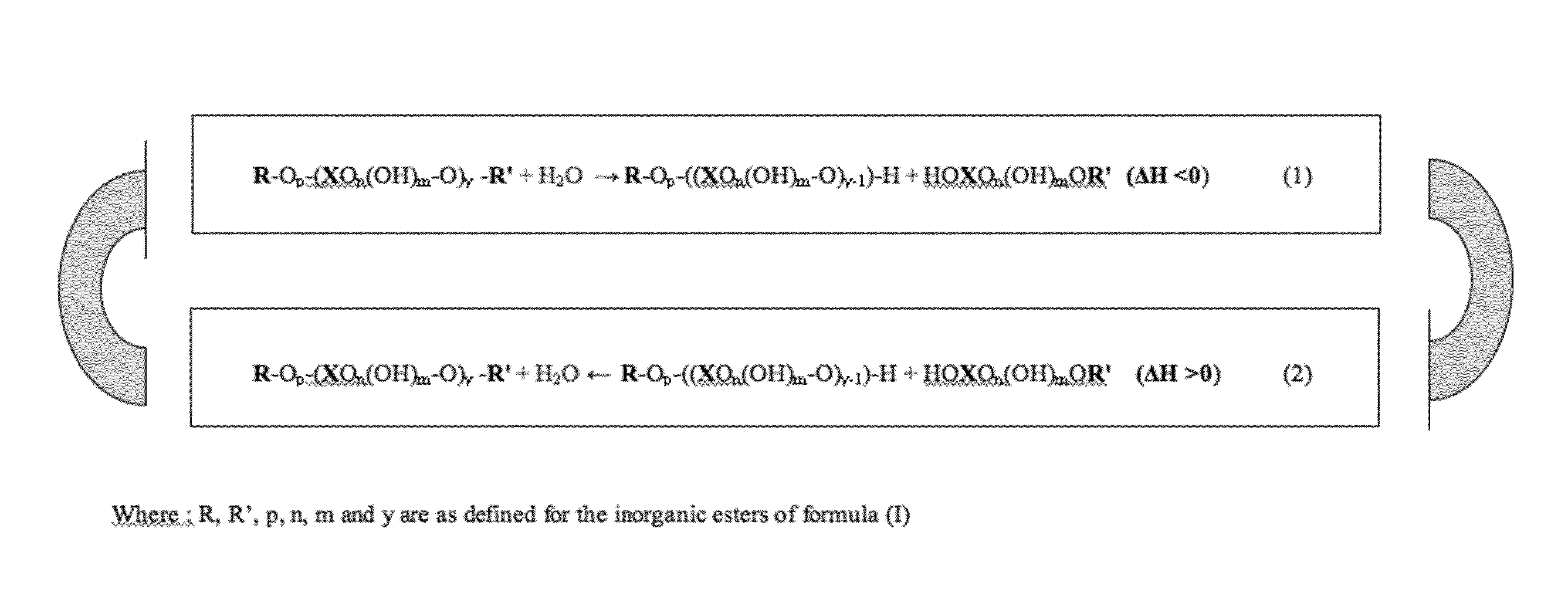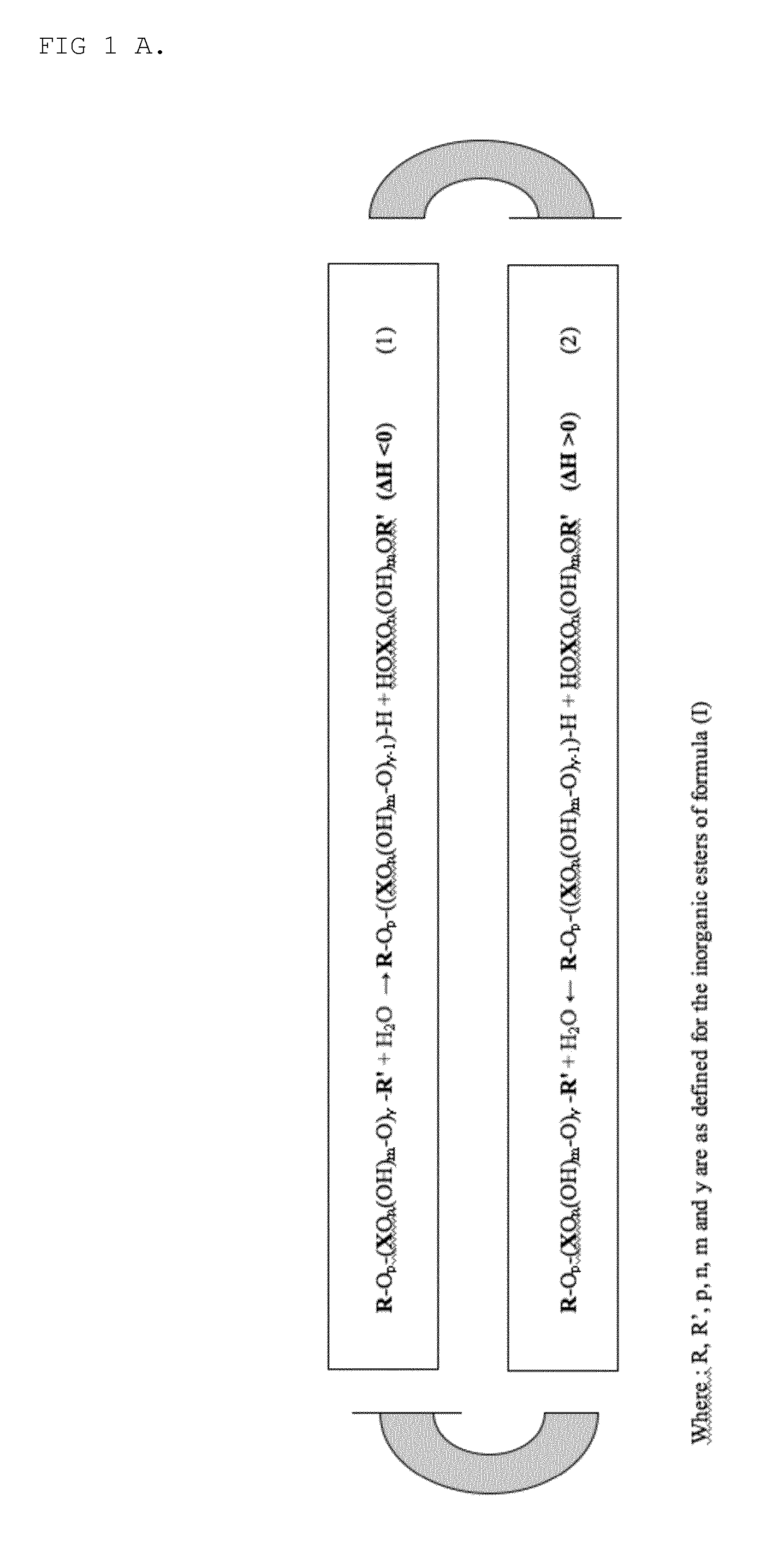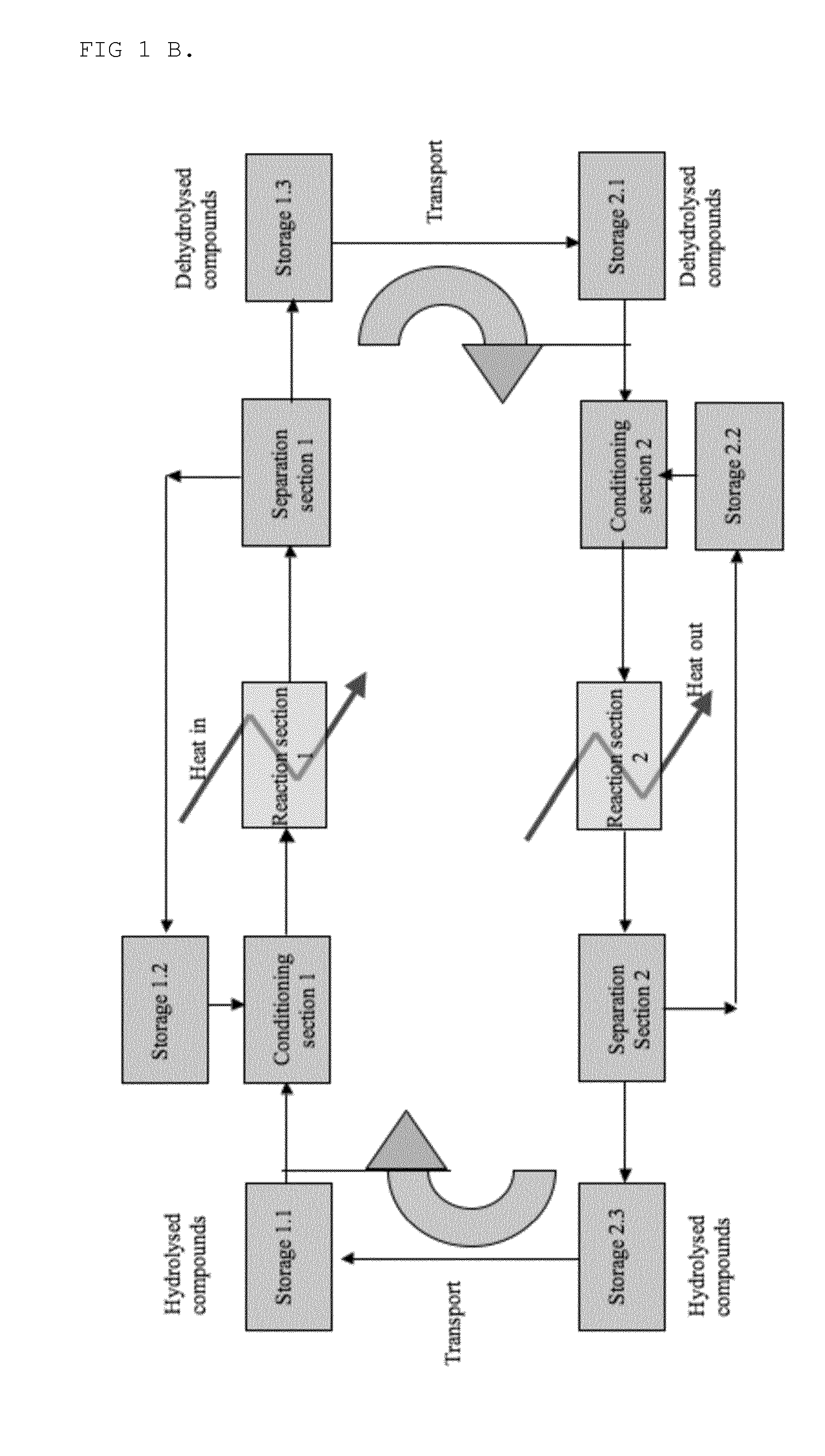Methods and components for thermal energy storage
a technology of thermal energy storage and components, applied in the direction of heat pumps, domestic cooling devices, lighting and heating devices, etc., to achieve the effect of increasing the thermal energy of a heat sour
- Summary
- Abstract
- Description
- Claims
- Application Information
AI Technical Summary
Benefits of technology
Problems solved by technology
Method used
Image
Examples
example 1
Phosphate / Polyphosphate Esters
[0168]Energy Density
[0169]The hydrolysis of a phosphor compound has a reaction energy of approximately 150-500 kJ / kg depending on the reaction conditions. Typically the proposed components have an energy density of 400-1000 MJ / m3. When higher temperature sources like e.g. sun are used, one can e.g. condense (dehydrolyse) phosphoric acid till dry P2O5 is reached, which has an energy density of about 3000 MJ / m3
[0170]Comparing to other heat storing materials, the heat capacity of the polymerized components here claimed is substantially higher. E.g. The phase change reaction of paraffin delivers 20-90 kJ / kg depending on the reaction conditions (copyright@2002 John Wiley & Sons, Ltd.). Solving sulfuric acid in water gives a reaction heat of 300-400 kJ / kg depending on reaction conditions (Chemical and engineering thermodynamics Stanley I. Sandler copyright@1989 John Wiley & Sons, Ltd.). The sole exception being the crystallization of Na-acetate that delivers...
example 2
Laboratory Testing of the CHEMENERGY Process at Different Starting Conditions
[0246]2.1. Starting with the Heat Releasing Process Loop at Ambient Temperature[0247]1. Mix water and Polyphosphoric acid at 20° C. and ambient pressure. Based on the heat balance detailed below, temperature will raise to about 95° C., agitate the mixture.[0248]2. Establish vacuum above the warm mixture, keep the mixture warm with electrical resistance and remove the evaporated water with an air condenser. Duration of this evaporation (separation) step will be dependent on the amount of water to be removed, but is likely to last for about 1 hour.[0249]3. Cool the polyphosphate mixture with ambient air to 25° C. Go back to step 1 and the loop is closed.
[0250]Calculation of Change in Temperature (Delta T):
[0251]If the mass % of the mixture is 90% polyphosphoric acid mixed up with 10% water, a reaction heat of 300 kJ / kg and an overall average mixture heat capacity (Cp) of 1.5 kJ / kgK, the Delta T, can be calcul...
PUM
 Login to View More
Login to View More Abstract
Description
Claims
Application Information
 Login to View More
Login to View More - R&D
- Intellectual Property
- Life Sciences
- Materials
- Tech Scout
- Unparalleled Data Quality
- Higher Quality Content
- 60% Fewer Hallucinations
Browse by: Latest US Patents, China's latest patents, Technical Efficacy Thesaurus, Application Domain, Technology Topic, Popular Technical Reports.
© 2025 PatSnap. All rights reserved.Legal|Privacy policy|Modern Slavery Act Transparency Statement|Sitemap|About US| Contact US: help@patsnap.com



